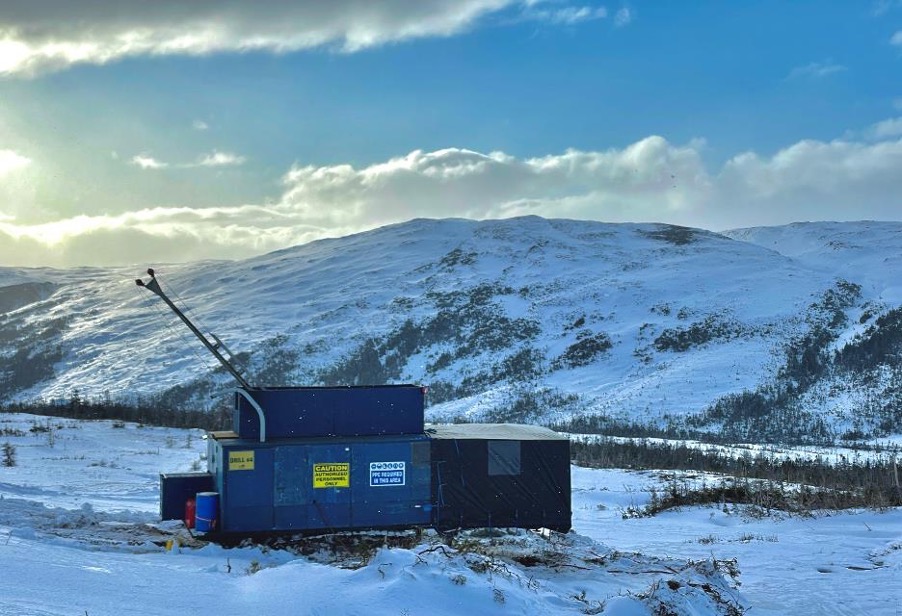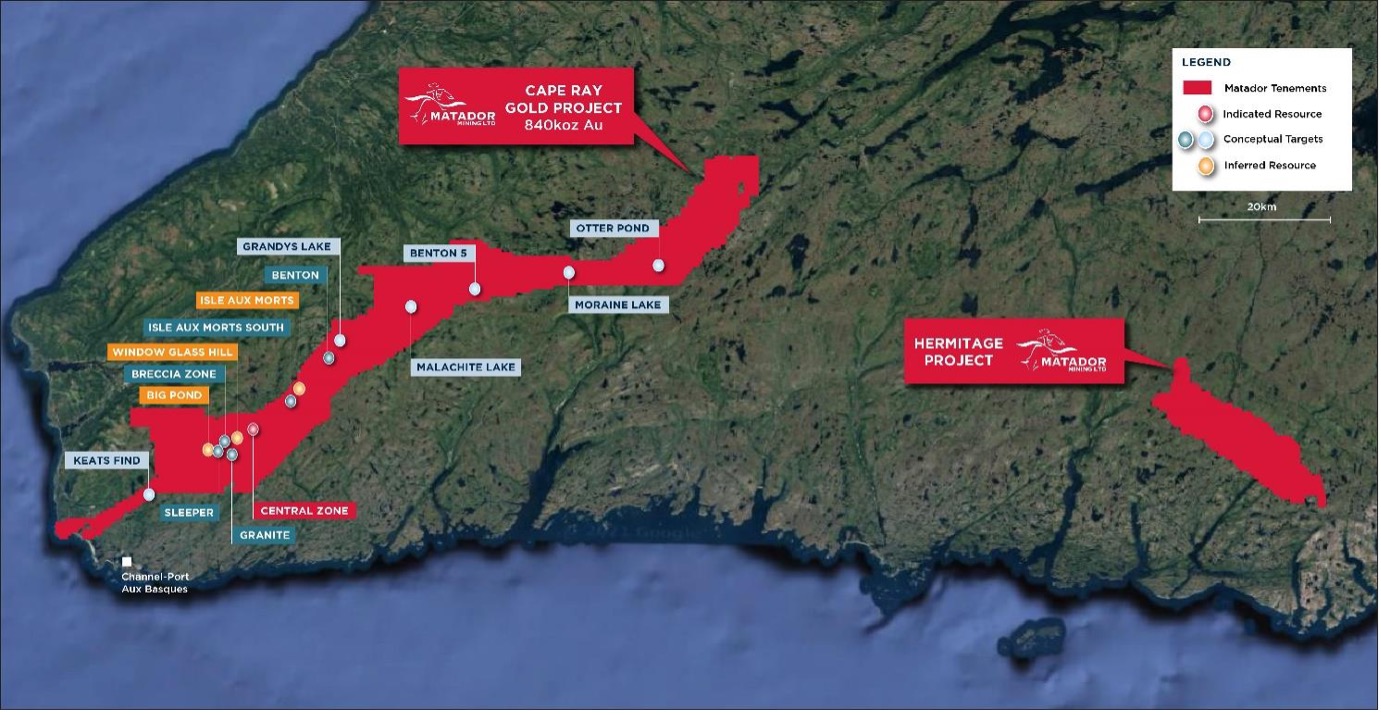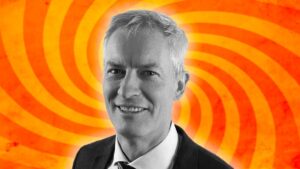Former Gold Road boss Ian Murray thinks his company Matador Mining has a winning formula in Newfoundland

Matador Mining executive chairman Ian Murray Pic: Matador Mining/Stockhead
After a decade of work at the helm of Gold Road Resources (ASX:GOR), Ian Murray’s decision to step down in 2018 with the company on the verge of its first gold pour may have confused some punters.
For the successful South African raised gold executive however, it was an opportunity to return to his roots in the junior resources space.
The 6.5Moz Gruyere discovery was a frontier find, located in the remote and new Yamarna district 200km east of Laverton.
Murray has found himself in similar frontier territory in Canada’s Newfoundland province, where he is executive chairman of Matador Mining (ASX:MZZ).
Under Murray’s watch, which has included Murray escaping his home in Perth for seven months during the pandemic to manage the company’s affairs from a remote base between Canada and Germany, it has built a 120km strike along the prospective Cape Ray Shear Zone.
Matador boasts 837,000oz in resources already at 2g/t, but Murray believes like with Gold Road at Gruyere, there is much more to the story that will be revealed with drilling.
Murray will soon step into a non-executive role with OceanaGold executive Sam Pazuki to take up the CEO’s position from Canada.
We caught up with Murray at the RIU Explorers Conference in Fremantle about working overseas through the pandemic, the importance of local management teams and why he believes Matador’s Cape Ray Shear is so prospective.
You’ve been overseas for the last seven months, what prompted you to do that?
“Well, I got appointed as chairman in May 2020. I couldn’t get to the project in 2020; I tried, I went through to Germany but then Canada shut its borders to visitors so I couldn’t get in. And then we applied for a visa for Canada which was granted in the first half of 2021.
“And then, given the West Australian borders, I decided let’s just go across, base myself in Europe, get across to the project as much as I could, attend the precious metals conference in Beaver Creek each year, which is a great conference. I was one of two Aussie companies there.
“And then also got to the UK twice to conferences there. That was just an opportunity to be based somewhere where you could travel, go to the project, see investors and be more proactive rather than in an area where there’s a different time zone and also restricted traveling.”
From your perspective do you think that the time is right now for WA to open up and allow people to move in and out?
“I think so, you’ve seen the bigger name companies Wesfarmers etc. that have moved people to the east coast, there are a number of mining executives with projects in Africa that are now basing themselves in Sydney, because from Sydney there’s a direct flight into Johannesburg with Qantas.
“And there are no restrictions to come and go from the eastern states. So I think for the economy, it is important.
“Obviously, the vulnerable people continue to need protection. So it’s got to be done at the same time as protecting the vulnerable, get the vaccination rates up, especially in the aged care places, keep those people protected.”
Moving back to yourself and your story, you made the decision to step away from Gold Road as Gruyere was being built. What prompted that decision from yourself and why did you decide to go back into junior mining?
“I enjoy the junior mining space. In a way it’s like putting a puzzle together. There are all the pieces and you just need to work out what’s going to fit together to make the project a success.
“It was great growing Gold Road from the original Eleckra days into Gold Road, the Gruyere discovery, during the joint venture with Gold Fields, and then seeing the project being built.
“So I had notified the board prior to that, that I didn’t want to be a managing director of an operating gold company. I would see the project through the construction phase, and then hand over to a new managing director, which we did. And I’m focusing now on non-executive roles.
“With Matador it’s an executive chairman, but we’ve announced the appointment of the new CEO who starts in May, Sam Pazuki (ex-OceanaGold), and I’ll then move to non-executive chairman. I’m really enjoying the non-executive roles across a number of boards, literally helping just put those puzzle pieces together.
“If you’re successful in putting the pieces together, you end up with a very successful company.”
And that’s the value uplift that you get to enjoy with a junior company, you might not really see if you’re a big company that’s getting to the stage where growth is just incremental.
“But you need a board around you that makes quick decisions, are entrepreneurial and also want to see shareholder value. A lot of boards I’m seeing the main focus is minimising risk for the directors opposed to maximising growth for shareholders, and the priority has to be on maximising growth for shareholders.”
Matador Mining share price today:
How is Matador different then to the companies that are just focused on minimising risk at the moment?
“We’ve picked up a lot more tenements in Newfoundland. So when I started, the tenement holding was like 60-70 strike kilometres. We’ve grown that to 120km.
“We picked up the Hermitage tenements, which we haven’t even tested yet, also in Newfoundland.
“We’ve also implemented the aeromag program and then we built special auger winkie drills.
“Both of those approaches, the aeromag and the auger drilling have never been done in this part of Newfoundland before. So the board was supportive of that. If you’re going to do exploration, let’s do it right.
“Let’s maximise the amount of information we can get from the programs that we’re running.”
So you’ve got a 837,000 ounce resource?
“So that was announced in May 2020. And since then, we’ve done 12,000m of drilling in 2020.
“In 2021, we did another 20,000m of drilling. We’re busy now with a winter program of between 3000-5000m of drilling.
“And then we’ll have our summer program where we haven’t defined how big that’ll be.
“So probably by the end of this calendar year, we’ll be in a position with three extra years of drilling to have the next resource upgrade.”

You’ve got 120km of strike, you’ve got a 4.8Moz ore body (Marathon Gold’s Valentine Lake) to the north and there’s no drilling done on the gap. How big an opportunity is that and can you think of an analogy in the West Australian context to what you’ve got in Newfoundland?
“We’re in the Cape Ray Shear, so this is the shear structure that hosts the Cape Ray gold, our gold, and it also hosts what Marathon’s got at Valentine Lake.
“The Cape Ray shear starts at the beach at a place called Cape Ray, surprise, surprise. And then that carries on for a couple hundred kilometres to the northeast.
“We’ve got our 840,000oz and then there’s about a 120km gap until you get to Valentine Lake’s 4.8Moz, and that gap has not been explored. And I’m not a geologist but I don’t think it’s likely that you’re going to have a gap like that that doesn’t host other gold systems.
“It’s on the same shear zone, where the fluids came up from the centre of Earth, and delivered the gold into these granite structures or sediment structures that we’ve found and what Marathon Gold has found.
“So it is a great opportunity but there are challenges because it’s not as if there are highways going into these areas, it’s got to be a helicopter supported exploration, which the Canadians do well.
“That’s the opportunity for us is fly the aeromags, identify the targets, do the first pass testing to make sure there’s gold in the system in the right traps for gold to be trapped, and then follow that up with diamond drilling.
“So it’s a huge opportunity. An analogy in Australia would be you’ve got the Kalgoorlie shear that goes from Norseman in the south, all the way up to Wiluna in the north. That would be one of the similar length structures. And in between that you’ve got Kalgoorlie in the middle and hosts of other gold systems.
“But that was discovered from the 1880s, 1890s. You’re talking 120-130 years of exploration compared to Newfoundland, where you’ve had less than 20 years of exploration.”

So that’s sort of the scale but being in a bit of a frontier jurisdiction.
“Well, it’s a tier one jurisdiction firstly, point that out, and then it’s a tier one jurisdiction that hasn’t been explored.
“So the other tier one jurisdictions, Australia has been explored for 130 years. The US, Canada have been explored for similar timeframes. Newfoundland hasn’t.
“So it’s a tier one jurisdiction, a safe country, very welcoming local government, local populations, First Nations groups, provincial government that want mining and exploration development to help their economy and create jobs going forward.”
We’ve seen a lot of Australian companies move into North America for the last few years. But they really do seem to have struggled once they got over there. Is there something that those companies maybe aren’t getting? Or is it just a case of that you need to operate in those areas for a long time to really work it out?
“I think one of the one of the challenges that all companies face is they’re doing an acquisition in a different region. And they think we’re going to do it our way, we’ve bought it because we can make a difference by doing it our way.
“You need to build up a local management team. There are huge benefits of bringing an Australian approach to exploration and mining. But that doesn’t mean that the North American, the Canadian ways are wrong.
“Get the best from both of them and then come up with what’s best for those assets and to do that you need to build up a local team.
“To try and run and operate Canadian projects from Australia from Sydney or Perth will be huge challenges, you need to have a team with the autonomy to make those decisions quickly.”
Do you think those companies are sort of still in that phase where they’re working out exactly how to get that mix right, the Australian and the North American models?
“Well, I think COVID caused big problems with that, because whatever people were planning prior to 2020, they couldn’t send people across and they couldn’t build up teams and have that cultural alignment between a team that they’d acquired in Canada together with the existing Australian team.
“So I think COVID had a huge part to play in just hampering any of the proper integration.”
Did that inform your decision to rebase yourself? And also bringing in far more Canadian executives as well?
“Through COVID, Newfoundland, just like Western Australia, they shut down. People from Canada weren’t allowed into Newfoundland, same as people from New South Wales couldn’t come into WA.
“So with that, we decided we needed to build up a team in Newfoundland, that wouldn’t be affected by these travel restrictions.
“So we’ve got a very good country head exploration manager called Crispin Pike, he was appointed just on 12 months ago and he has been building up a team around him of very good geologists.
“We’ve now taken the next step of appointing a Toronto-based CEO. So again, that person is close to the North American institutions. Sam’s been looking after investor relations together with business development, corporate development for OceanaGold for the last 10 years.
“So he’ll also expand our shareholder reach in North America, and also be only one flight away from the island when he needs to meet with the provincial ministers, the First Nations groups, the local communities as well.
“For me to fly from here I’ve got to plan it in advance, get approvals, and it still takes you two or three days just to get there and then you’ve got the jetlag.”
And the other name that stands out is technical advisor Kerry Sparkes who was Pierre Lassonde’s right hand man at Franco-Nevada.
“So we were introduced to Kerry through one of the Canadian brokers. I was told Kerry Sparkes is Mr Newfoundland. Anybody who’s interested in an exploration project in Newfoundland will ask Kerry first what he thinks of the project and the management team involved in that project.
“So I then reached out to Kerry and got to know him and then we’ve asked him to join us as an advisor to the board. He’s retired back to St. John’s and is still involved with Pierre Lassonde’s companies.
“But he has been approached by a number of companies to join their boards, and he’s quite selective over where he does join.
“He worked on our project in the 1990s, early 2000s he worked on the Cape Ray Shear, he was a geologist on that project area.
“So I met him, he came and visited the project in September when I was there last year and he was reminiscing about the work that they’d done and we were looking at the open pits that he had drilled out.”
That’s a good vote of confidence in the project I imagine.
“He believes in the area but he also believes in doing the right greenfields exploration because the ultimate question with geologists is how do you know you found the best one? You found the easiest one but have we found the best one?
“And so he’s a big believer in doing good greenfields exploration to see what there is up and down that shear zone. What’s between us and Marathon Gold? We’ve got to test it.”
Is that a lesson that you have kind of taken over from the Gold Road days?
“Back in Eleckra and then in the early days in Gold Road, there was what was called the Golden Highway, where we had a million ounces in the Yamarna Shear.
“And the geologists kept going back and drilling that up and tried to expand that footprint. And they added incremental ounces which was good.
“But what we did in 2011 is we said stop exploring where we know there’s gold, do the targeting across the entire tenement holding that we’ve got and come back with the 10 best areas that have the potential to host big systems.
“If we believe that the Yamarna tenement holding is highly prospective, we should be able to identify good targets to test. And it took 18 months doing gravity surveys, mag surveys and then the ranking and prioritising of these targets, we then came up with the 10.
“And lucky for us, the first one they tested was Gruyere. It’s now a 6.5-7Moz project, so it was just changing the mindset of the geological team, saying don’t go back to where you found gold before.
“Look for where you think you have the best potential to find big systems. And that’s what we’re doing at Matador as well.”
Where you’ve got the resource, are you convinced that’s just the tip of the iceberg, that there are better targets out there you haven’t found yet?
“90-95% of our tenement has transported cover, which is shallow, half a metre to 5m thick. The current 840,000oz is where the mineralisation has outcrop to surface.
“So that’s in less than 10% of our area. They found it at surface and they followed it down. Until the last two years nobody’s searched or explored under the transported cover and we’re doing that now.”
At Stockhead, we tell it like it is. While Matador Mining is a Stockhead advertiser, it did not sponsor this article.
Related Topics

UNLOCK INSIGHTS
Discover the untold stories of emerging ASX stocks.
Daily news and expert analysis, it's free to subscribe.
By proceeding, you confirm you understand that we handle personal information in accordance with our Privacy Policy.








